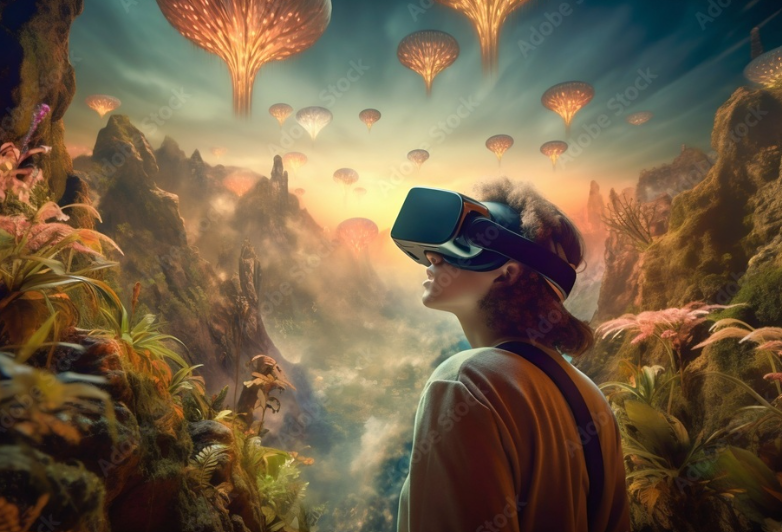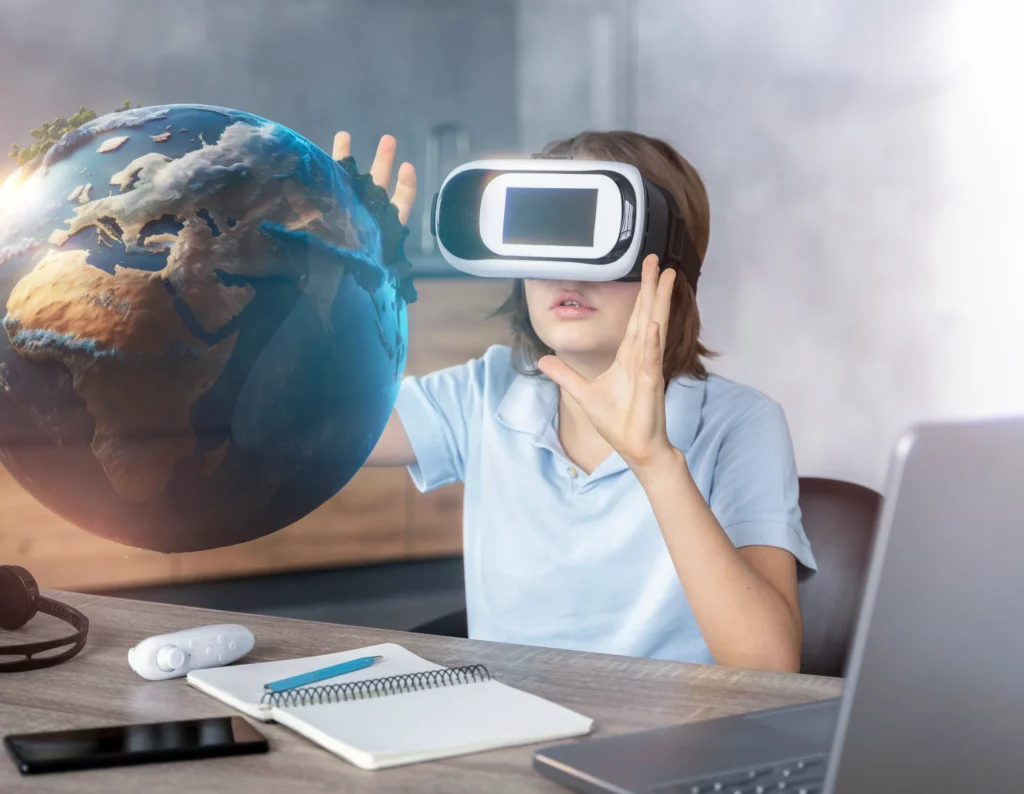Today, in the rapidly evolving educational landscape, creating immersive learning experiences has become a key focus for educators and education designers. Immersive learning goes beyond traditional methods, allowing learners to interact with content in a more interactive, experiential and engaging way; by utilizing innovative technologies and strategies, teachers can enrich the learning process, enhance learner engagement, knowledge retention and practicality.
Anirban Das, creative director at EI, points out that one of the main reasons why an immersive learning environment is worth investing in is the presence factor “Presence Factor”. Remote workers or those who work according to the hybrid work model hybrid work methodology may miss, sometimes the deeper aspects of participation offered by learning programs. Investments in immersive learning help connect remote teams and stimulate their interest in learning by creating the feeling of being ” Being There “. Immersive learning does this by erasing the barriers of the physical world and offering as close as possible to real simulated experiences for distance and hybrid learners.
In this article, we explore the strategies, techniques, and considerations needed to create immersive learning experiences for learners. She also explores the role of technology in driving immersive experiences.
First: immersive learning strategies
In the field of education and training, immersive learning strategies have emerged as powerful tools to engage learners and enhance the overall learning experience. Immersive learning takes learners beyond passive absorption of information and immerses them in interactive, dynamic and realistic environments. There are many immersive learning strategies available, each of which offers unique advantages and results. Here we mention, for example, but not limited to, the following:
Gamification Gamification: by adopting games as an immersive learning strategy, educators and education designers have the opportunity to transform traditional learning experiences into engaging, interactive and effective learning endeavors. Gamification as an immersive learning strategy involves integrating game design elements into educational or training contexts to improve the learning experience. By integrating points and badges, learners are motivated to participate effectively and compete with others, and through the use of simulation and virtual reality, learners can engage in real-life experiences that provide instant feedback, in an environment that encourages collaboration and social interaction, promotes sharing, motivation and knowledge retention by leveraging learners ‘ inherent desire for achievement and creating an interactive and rewarding learning environment.
Story-based learning: story-based learning is an immersive learning strategy that leverages narrative to create engaging and meaningful learning experiences. By integrating Stories into the educational process, learners are transported into a narrative world that captivates their attention and excites their imagination. Whether through fictional scenarios, historical events or real-life case studies, stories provide a context for learning, making it more relevant and memorable. In story-based learning, learners become active participants in the narrative. They take on roles, make decisions, navigate through the challenges and conflicts presented in the story.
Through storytelling, complex concepts and abstract information can be presented in a more accessible and engaging way. Learners emotionally connect with characters and situations, which helps to form a deeper understanding and connection with the content.
Branching simulations: branching simulations provide learners with an opportunity to navigate through realistic scenarios and make decisions based on different trajectories. This strategy promotes critical thinking, problem solving and decision-making skills. Learners can experience the consequences of their choices in a safe environment, allowing them to learn from their mistakes and explore alternative outcomes. Branching simulations offer learners a variety of paths and outcomes, branching based on their decisions and actions. By engaging in this simulation, learners are actively involved in problem solving, critical thinking and decision-making processes.
Video-Based Learning Video-based learning: Video-Based Learning uses videos as the primary means of delivering educational content. Whether it’s instructional videos, demonstrations, case studies, or expert interviews, the videos offer visual and auditory stimuli that cater to different learning styles. Through video presentations, complex concepts are presented in a concise and engaging manner, making it suitable for a wide range of subjects and learners.
Scenario – based learning Scenario: learners immerse themselves in real-life situations that reflect real-life challenges, and so that learners actively participate in these scenarios, applying their knowledge and skills to problem solving and decision making. This strategy promotes critical thinking, problem solving and the transfer of learning to practical practices, qualifying learners for application in the real world. For example, Naseej provides a virtual reality platform for Anatomy, which offers an immersive three-dimensional experience that takes the user to horizons beyond the boundaries of the two-dimensional world. It makes the user a key player in the scenario of events, anchoring the experience in memory in an unprecedented way.
The best way to ensure that your immersive learning environment achieves its stated goals is to make it relevant and relevant to your target audience. Do this by focusing your learning content around real – world scenarios and use cases-not based on virtual or abstract learning.
The use of AR / VR / ER and MR technologies also provides highly interactive and immersive experiences. Augmented reality (AR) superimposes digital information on the real world, while virtual reality (VR) creates fully immersive virtual environments. As for extended reality (ER), it combines physical and virtual elements, as well as mixed reality (MR) mixes the interactions of the real and digital world. These technologies enable learners to manipulate virtual objects and environments, facilitating a deeper understanding and practical application of concepts.

Second: immersive learning techniques
In today’s fast-paced, technology-driven world, immersive learning technologies have gained great importance in education and training. By leveraging technology such as virtual reality (VR), augmented reality (AR), simulation and interactive multimedia, immersive learning technology opens up new possibilities for teachers and learners alike. To ensure the maximum benefit from this technology, it is important to take into account the following:
Choose a content-based technology” content-driven “:
When aiming to create immersive experiences for learners, the choice of “(VR) or augmented reality (AR) technology are suitable options. These technologies enable learners to explore simulated environments, manipulate objects and interact with content in a highly immersive way. If your focus is on delivering rich media content or dynamic visualizations, you can consider technologies that support high-quality video streaming, animation, or simulation. These technologies enable you to integrate engaging visual elements and interactive elements that enhance learner engagement and understanding.
Use a combination of immersive technology and content strategy to enhance the impact:
To enhance the impact of your immersive learning strategy, it is necessary to combine the power of immersive technology with a well-thought-out content strategy. These two pillars complement each other and work in tandem to drive excellence in the learning experience. For example, implementing a virtual reality (VR) approach can significantly increase learner engagement and motivation. By integrating game elements into the virtual reality environment, such as challenges, rewards and leaderboards, learners are motivated to actively participate and excel in their learning journey. The immersive nature of virtual reality enhances the gaming experience, making it more compelling and enjoyable for learners.
Another effective combination is virtual reality based on mini-learning. Mini-learning involves the presentation of small-sized concentrated content that can be consumed in short batches. When combined with virtual reality, learners can participate in immersive interactive experiences that advance targeted knowledge and skills. This combination allows for fast and efficient learning, catering to learners ‘ busy schedules and providing them with valuable insights. Metaverse also offers another opportunity to combine immersive technology with content strategy. This emerging trend can provide learners with a collaborative and dynamic learning environment, enabling them to explore, create and interact with digital content and fellow learners. By leveraging metaverse, learners can engage in immersive learning experiences that foster creativity, collaboration, and knowledge sharing.
On the other hand, the integration of appropriate mobile technology and responsive design is essential for a learning strategy on the go. Learners should have access to the necessary content and immersive experiences through mobile devices, ensuring flexibility and convenience.
Take advantage of LXPs learner experience platforms to build specialized learning journeys:
One of the main strengths of learner experience platforms is their ability to personalize the learning experience. These platforms use advanced algorithms and data analytics to understand learners ‘ preferences, interests, and learning styles. By harnessing this knowledge, these platforms can offer content and experiences that match the needs and preferences of each learner. This personalization creates a sense of relevance and connection, making the learning journey more meaningful and engaging for learners. LXPs also allows the learning environment to be customized, so that learners can control their own learning path, choosing modules or topics that match their interests or immediate learning goals. Freedom of choice and self-directed learning empower learners, promote independence and motivation. Learner experience platforms also make recommendations based on learners ‘ progress, and suggest relevant content or activities to support their ongoing development.
In the context of immersive learning, learner experience platforms act as a central hub for many immersive experiences, such as virtual reality (VR) simulations, interactive scenarios and simulated elements. Learners can explore and access these immersive resources within the platform, allowing them to interact with the content in a more interactive way.
LXPs facilitates the seamless integration of immersive elements, enhancing the overall learning experience and promoting deeper understanding and knowledge retention. It also promotes collaboration and social learning, since these systems often feature social components such as discussion forums, peer feedback, and collaborative projects..
In the end, before you start planning and developing immersive learning experiences in your workplace, there is one golden rule that you should remember: “although advanced learning technologies, such as artificial intelligence, virtual reality and augmented reality, provide the basic foundation for integration, building an immersive learning environment should not be your only goal. True comprehensive learning requires both a comprehensive technical structure, as well as compelling and engaging content”. Focusing on one side of the solution, to the detriment of the other, will likely result in a limited return on your immersive educational investment.

